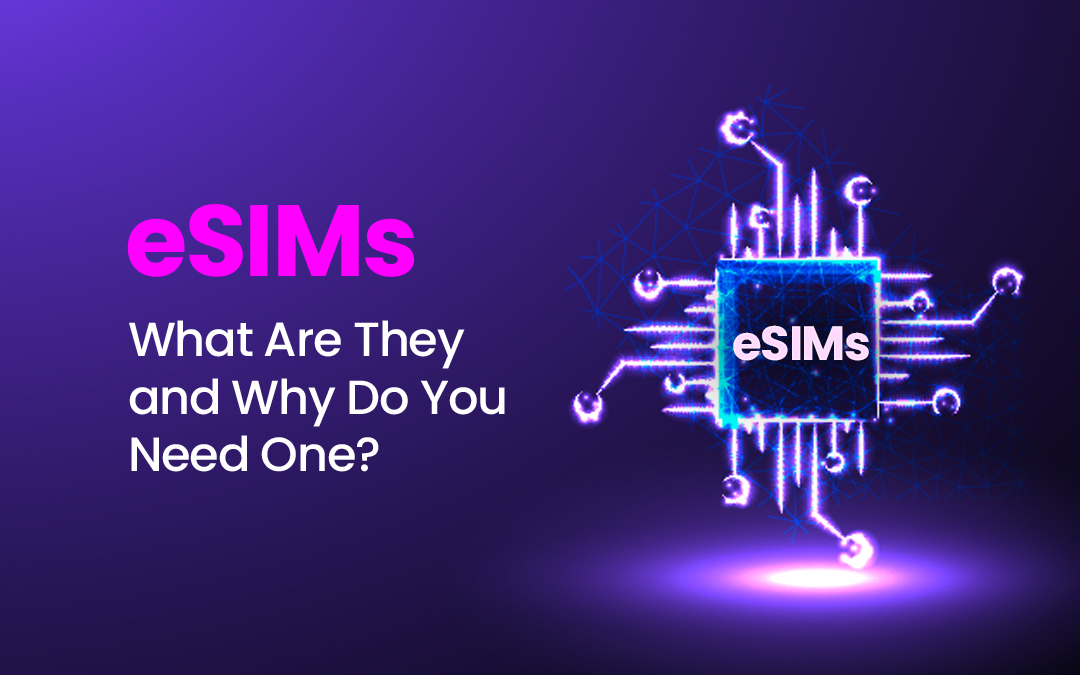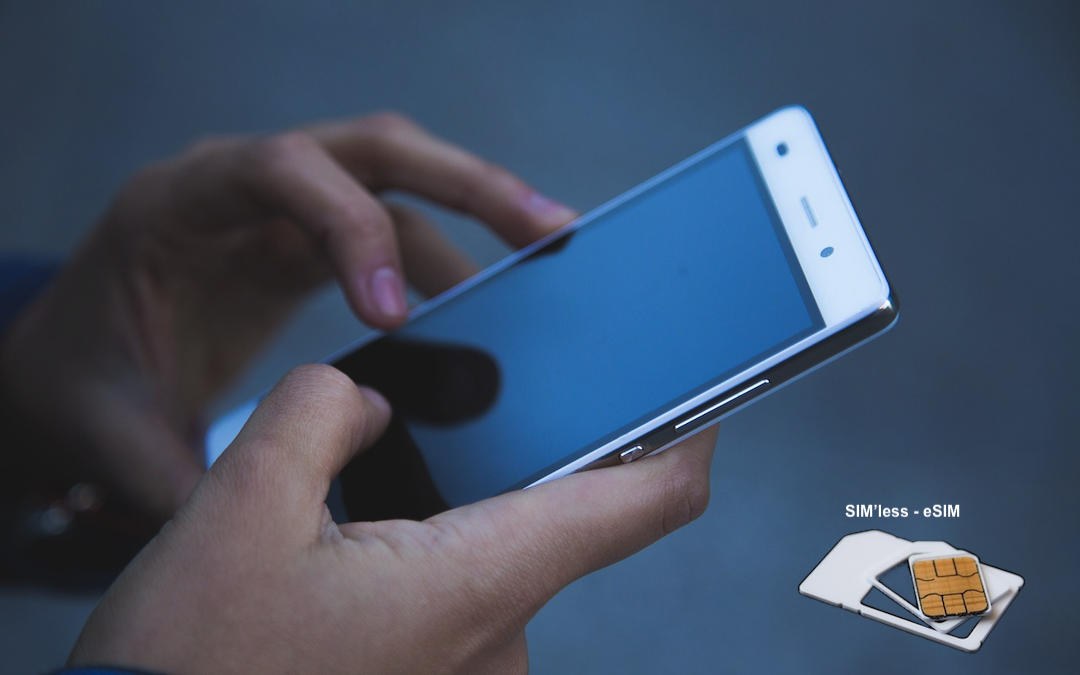
If you’re a mobile user, you’ve probably heard the term “eSIM” floating around in recent years, especially if you travel a lot. Maybe you’ve seen ads for it when you’re browsing through a catalog looking at all the new phones on offer from leading brands like Apple and Samsung.
But what is an eSIM and how does it differ from a regular SIM card? Is it even worth considering this tech?
The SIM (Subscriber Identity Module) is a key component of your phone, and without it, you can’t text or call our contacts. Developed and launched in 1991, this handy tech gives your device a unique identity, allowing you to connect to mobile networks, giving you the power of mobile communications at your fingertips.
In a time where global travel is more affordable and accessible than at any stage in history, many people are making the shift to eSIMs. With an eSIM, you get more flexibility in choosing providers in any country, without the need to change the SIM card in your phone. Doesn’t that sound amazing?
Developed in 2012, eSIM tech is the next generation of SIM tech that’s held its ground for the last three decades. Most new models from leading mobile device brands feature a chip in the device that stores multiple SIM profiles, so there’s no need to keep replacing your SIM when you switch service providers.
That’s super handy when you’re traveling internationally, giving you the ability to seamlessly switch between cellphone providers when touching down at an international destination.
How Does an eSIM Work and How Do I Use It?

Unlike the fixed nature of physical SIM cards, eSIMs give you the option of reprogramming them with new providers whenever it suits you. They perform all the same functions as a conventional SIM, connecting your phone to local mobile networks so you can text, make calls, and browse online, without switching SIM cards.
The eSIM chip in your phone can store several eSIM profiles and data plans, allowing you to switch between the profiles with a tap of your phone settings. Remember the last time you lost or misplaced your SIM, and the hassle it caused on your trip? Well, those memories are in the past and you’ll never have to worry about being trapped in that sticky situation again.
As long as you have a compatible device, you can download and install an eSIM in a few minutes, all without hunting down the kiosk at a local airport when you touchdown at international arrivals.
There are several providers, such as BuddySIM, that allow you to install the software by simply scanning a QR code and choosing your data package. You have options for data plans ranging from 1GB to 50GB, and affordable rates far below what you’ll spend on roaming charges with your current provider.
Who Needs an eSIM for Their Phone?
While eSIMs are now a must-have tech for your phone, they weren’t initially developed for this purpose. The original functionality of the eSIM tech was to enable communication between devices connected to the “Internet of Things” (IoT).
Its shift towards becoming essential mobile tech only occurred in recent years, but it's fast gaining rapid adoption across the international travel community. In 2024, most device manufacturers, including top brands like Samsung, Apple, Nokia, and Microsoft, all include eSIM technology in their devices.
To check if your device is compatible, just log on to the BuddySIM site and check if it works with your phone or tablet. It’s not surprising that the iPhone was the first to receive this forward-thinking tech back in 2018, with the company shifting to eSIM-only versions with the launch of the iPhone 14. The iPhone 16 shows the power of this tech, featuring compatibility for eight different eSIMs on one device.
But most people haven’t heard of eSIMs, and they don’t understand how they fit into the world of mobile tech. That’s great, and the reason why we decided to curate this post to bring you in on this groundbreaking tech.
Do you enjoy traveling out of the country for business or leisure? You will love the functionality an eSIM brings to your communications when you’re traveling to foreign destinations. Speak to any traveler and they’ll tell you that one of their biggest pet peeves is switching SIM cards when they reach a new country.
First, you have to find a kiosk at the airport and buy a new SIM, then you have to pay outrageous fees for prepaid data packages. With an eSIM, you just toggle a switch in your settings and you’re operating on a local network. That means no risk of logging onto public Wi-Fi networks at the airport or the hotel where a hacker could be lurking to draw you into a trap and steal your information. You get instant connectivity at the tap of a button.
Wrapping Up: Use an eSIM and Lower Your Carbon Footprint
In the 1990’s the first SIM cards were the size of credit cards. Innovations in the tech saw them shrink to the new nanoSIMs we all use today. While that’s great, it still means that SIM cards are a contributor to plastic waste, which damages the environment.
Conventional SIMs feature construction with PVC plastics and silicon, making them toxic to the land and oceans, and a contributor to the microplastics crisis ravaging the planet, and the population.
An eSIM isn’t a physical card, it’s a chip in your phone, and it doesn’t contribute to pollution and the microplastic crisis. It’s a sustainable way of managing your mobile communications, lowering your carbon footprint and the impact you make on the planet.
We can think of the eSIM revolution as similar to the shift from physical plastic bank cards to digital payment technology. It’s going to be a while before eSIM technology overpowers the use of conventional SIMs, but you can bet it’s the next logical step towards evolving this essential communications technology. Are you ready to make the shift to an eSIM?
Share this post
Leave a comment
All comments are moderated. Spammy and bot submitted comments are deleted. Please submit the comments that are helpful to others, and we'll approve your comments. A comment that includes outbound link will only be approved if the content is relevant to the topic, and has some value to our readers.

Comments (0)
No comment